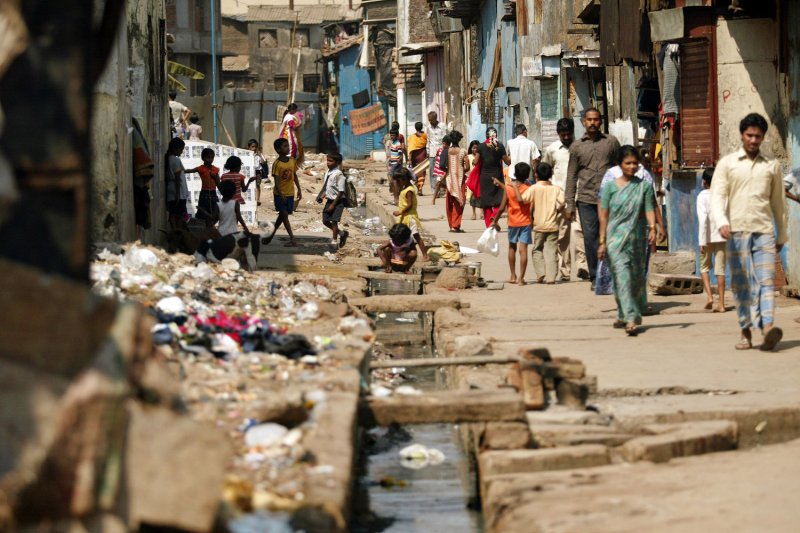Indians walk through a slum under in Mumbai, India on March 14, 2009. (UPI Photo/Mohammad Kheirkhah) |
License Photo
DENVER, April 10 (UPI) -- Urban sprawl isn't just American phenomenon. It's happening all over the world. Throughout the countries of the developing world in Asia, Africa and Latin America, "new towns" are being assembled on the edges of major metropolises.
Researchers claim these satellite city projects are putting the world's poor at risk -- pushing impoverished populations farther into the margins and exposing them to disease, pollution and natural disaster.
Andrew Rumbach, an assistant professor of planning and design at the University of Colorado Denver's College of Architecture and Planning, studies the relationship between urban development and natural disasters all over the world. He says much of the world's metropolitan construction is leaving the most vulnerable more vulnerable than ever.
"Clearly, we need to expand the scope of planning for these new cities to include the communities where the poor will live," said Rumbach.
The problem, he says, is that these new towns, or satellite cities, rely on the cheap labor of the poor, who gather outside the city outskirts in informal settlements, or slums. In many places across the developing world, these slums are being pushed lower and farther into the flood zone.
When cyclones or monsoons strike, Rumbach explains, these settlements and their inhabitants suffer severe flooding, usually followed by outbreaks of cholera, hepatitis and dysentery.
Rumbach did much of his research by interviewing day laborers living in the slums outside Salt Lake, an affluent satellite city constructed on the outskirts of Kolkata, India. He found most to be living in shared, cramped quarters. Few had plumbing, and most shared outside toilets with hundreds of other residents.
"These workers are excluded from working in the township itself … so the increased hazard exposure associated with the low-lying terrain dramatically increases their risk to natural hazards," Rumbach wrote in his study.
Rumbach says the future city planners of the world need to better account for the needs of the working poor.
"The workforce is essential to everyday functioning of townships like Salt Lake," he said. "To reduce risks associated with new town development, planners must take these vulnerable groups into account."
Rumbach's work will be published this July in the journal Habitat International.
[Habitat International]















